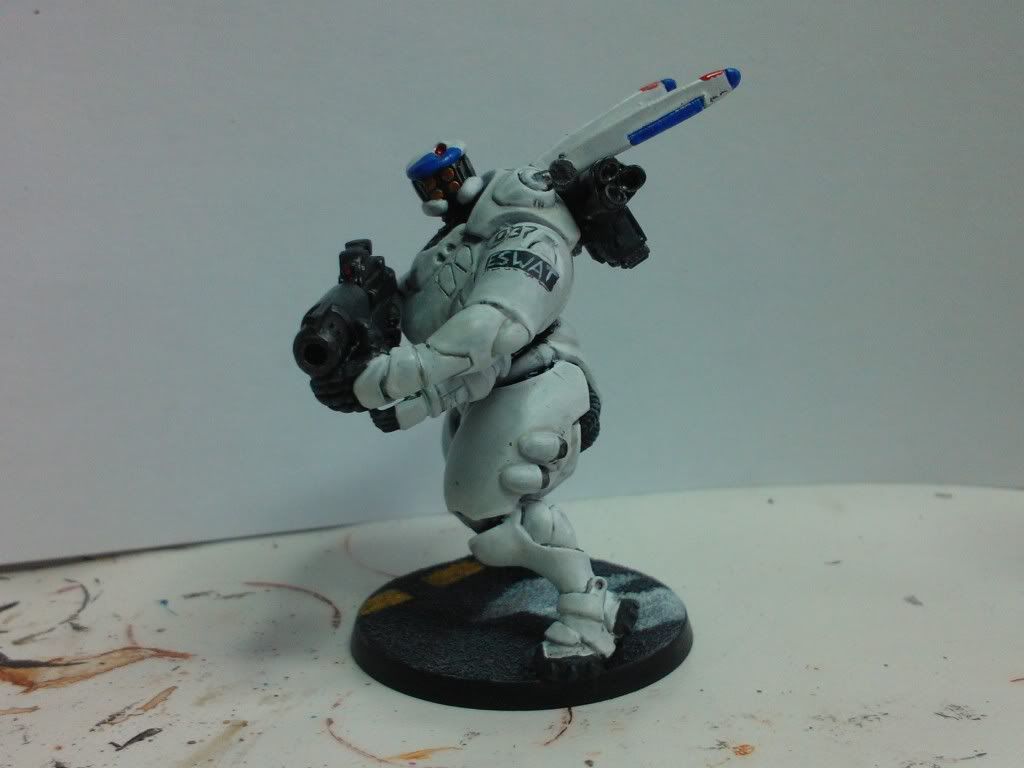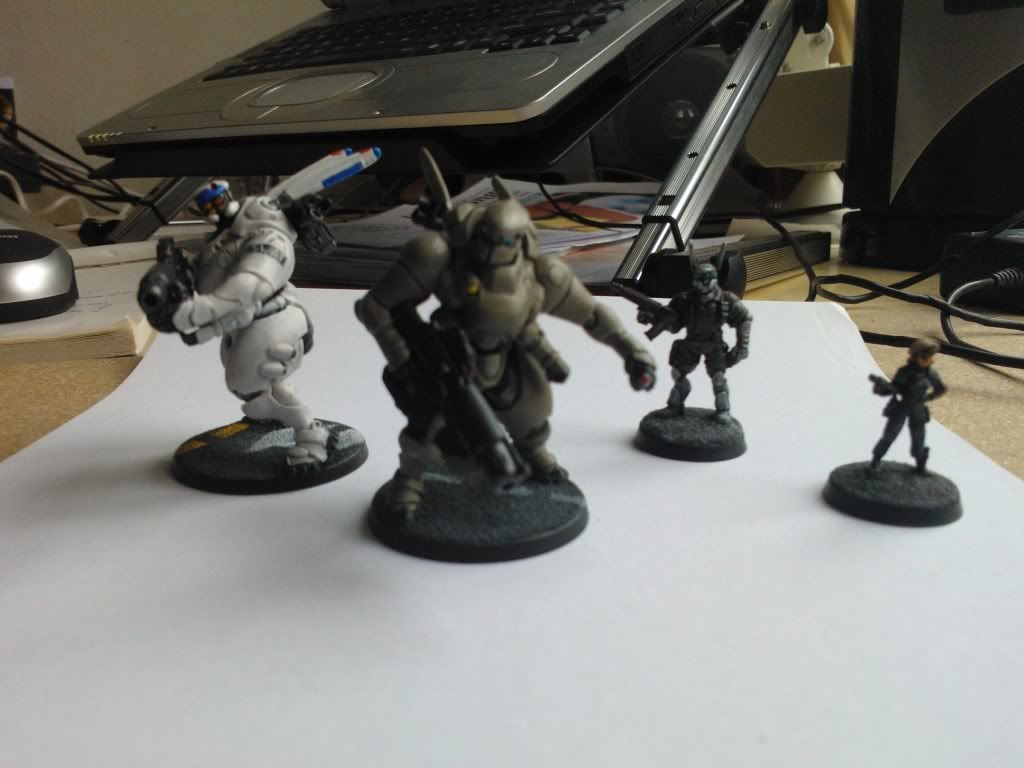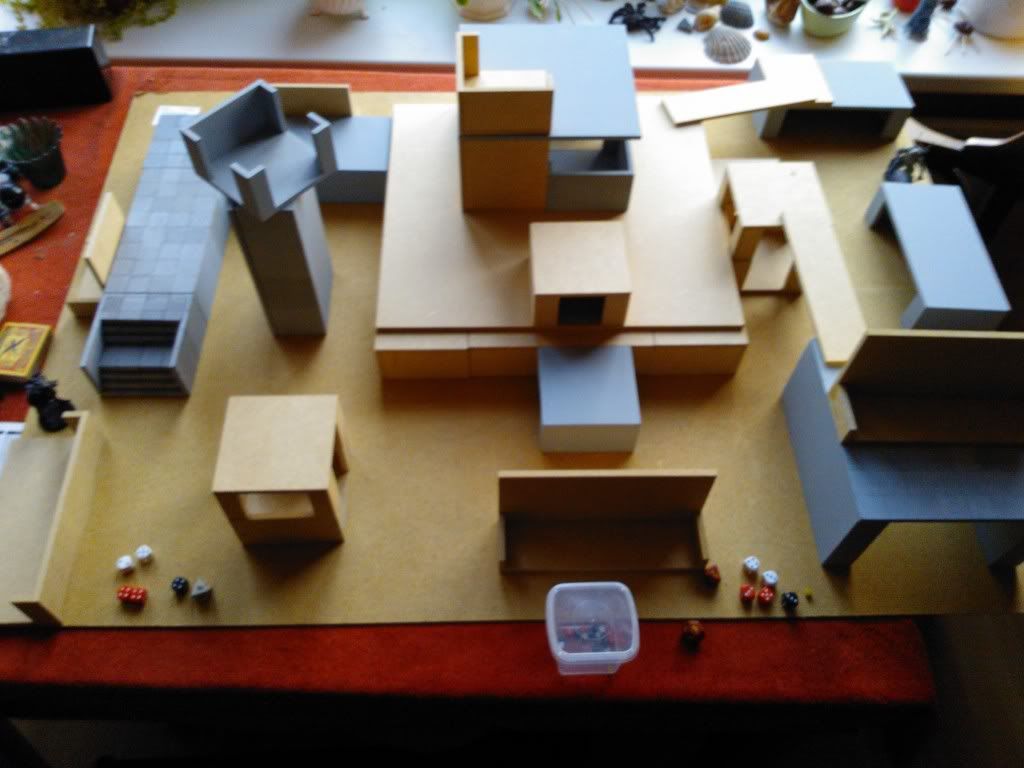Happy New Year!
Well, another calendar completed it's cycle, again without ill effects. ;-P
No painting today, I was a still a bit woolly and lazy from last night's celebration....
I did however, decide to pull out the modular interior/dungeon terrain a
friend of mine put in "foster care" with me. Looking at the Appleseed artwork, there is a lot of relief in the terrain. I was wondering how to emulate that (preferally without having to build a fully contoured modular table...). I thought that separate modular "elevations" may do the trick. I could "proxy" the idea with his terrain modules.
Here's a quick experiment on a 2.5x3.5 foot board (the misses normally uses this for her puzzles):
The modular elevation idea seems to work quite nicely, even if they're a bit on the square side for Appleseed. I may need to introduce some non-90 degree bends and some curves.
As you can see by the dice and 2 Landmates (one painted, one primer black) on the board, I couldn't resist a little impromptu field test. :)
I used the Mobile Frame Zero rules I told you about in previous posts, but with a base unit of measurement of 5 cm (instead of 5 studs).
I played the rules a bit fast and loose this time: I didn't bother formally calculating Asset Value and determining attacker/defender. I just wanted to test movement and combat/damage with this run.
It seems to work quite nicely for this sort of thing, with maybe some Appleseed-specific house rules needed.
And a bigger table is definitely needed with a 5cm base measurement! Speeds felt right though, scalewise.
One thing that bothered me was that there were a couple of instances where, in an Appleseed setting, the Landmate would have reacted to the other's actions. But they couldn't because they weren't the active unit at that time. I might seek a way to enable this. (As part of the Appleseed-specific house rules mentioned earlier)
Here is one such example:
The black Landmate in the background was already in that location when the painted Landmate darted across the open to get into the cover you see it standing behind in the picture. It just didn't feel right that the black Landmate couldn't squeeze of a snap shot in the hopes of a lucky hit as the enemy passed through view.
What I am thinking of at the moment is allowing each Landmate/Unit to retain a maximum of one each of their
unused white (general use), green (movement) or red (attack) D6 at the end of their activation.
They can use
one of these dice in response of specific enemy actions: If an enemy moves
into their line of sight, or if they themselves are attacked by the enemy unit. A unit may only do this
once between activations.*
At the start of their next activation, all retained dice are discarded.
On the one hand I fear that this may promote reactive tactics (like Warhammer 40K 2nd Edition's "Overwatch" as an extreme example) which would de-emphasize the Mobile Suit Zero's focus on decisive, offensive action.
On the other hand, I may also rebalance the seeming over-effectiveness of the "half-frame infantry" I described in my December 22nd post...
I'm also not entirely sure about how relatively fragile even armoured Landmates seem to be compared to half-frame infantry under the regular "one hit is one system lost" rules. It may need to be tweaked to "one die lost per hit" to redress this. But at that point, on top of al previous house rules I feel I'm crossing over from "tweaking the ruleset I chose" to "writing my own rules, inspired by the ruleset I chose"!
*: This is somewhat inspired by the
Infinity game ARO rules. I've been lurking on their forums for the clean sci-fi scenery inspiration, but have gotten quite intrigued by the game itself (Yes, I'm hopeless, I know...).
I've also been messing around with the demo of Frozen Synapse (pc game) which also features this sort of responsive fire mechanic. (As well as abstracted, rectangular terrain representation. Could this have inspired my idea to pull out the modular terrain, I wonder? If not, it is at least a curious coincidence.)




